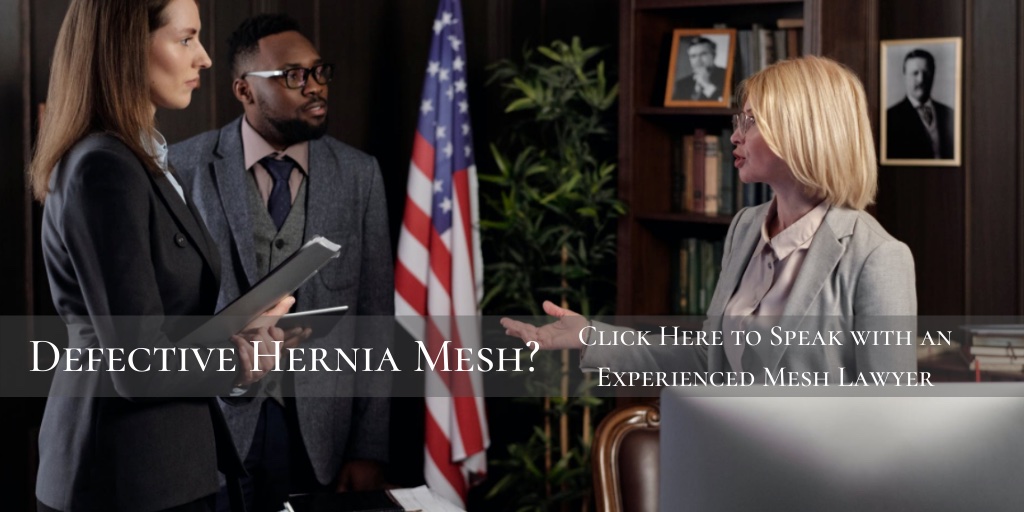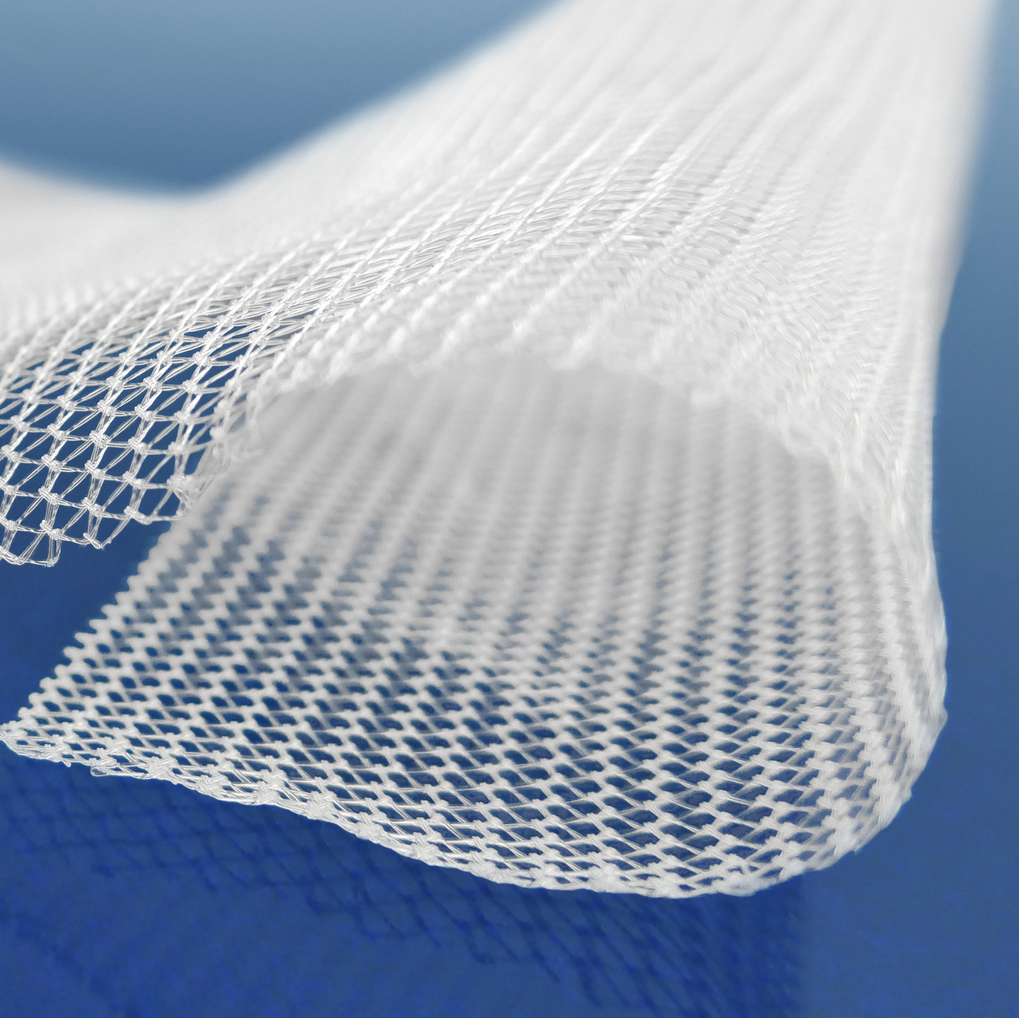Last Updated November 23, 2020
A hernia is a condition where an organ, intestine, or fatty tissue (typically in the abdomen) pushes through a weak spot in a surrounding muscle or connective tissue. They are usually caused by a combination of pressure and the development of the weak spot. Hernias are more common later in life – although they can manifest at birth. Factors contributing toward hernia development are obesity; lifting heavy objects; diarrhea or constipation; or persistent coughing/sneezing. Additionally, poor nutrition, smoking, and overexertion can contribute to the formation of a hernia.
The only way to repair a hernia is with surgery. Hernia surgery is one of the most common surgical procedures performed worldwide. The most straightforward method is for a surgeon to make an open incision into the abdomen and then attempt to repair the breach in the tissue wall with sutures. However, this type of procedure has a high rate of “recurrence” meaning that the sutures do not hold up well over time and further procedures become necessary.
As an alternative to sutures, surgeons prefer to use mesh devices as a tool to strengthen the area around hernias and make a repair that has less possibility of recurrence. Historically, surgical mesh has been used to repair hernias for well over a century in the United States. Today, more than 80% of hernia repair procedures performed in the U.S. involve mesh and there are more than 70 types of mesh commercially available.
Hernia Surgical Mesh Treatment Options
The most common type of hernia repairs involve inguinal hernias. Other types of repair procedures can involve the following types of hernias:
- Femoral
- Inciscional
- Ventral
- Umbilical
- Hiatal
For some types of hernias, surgeons may elect to take a “wait-and-see” approach if the patient is not experiencing any serious complications. Instead, they will opt, with the patient, to monitor the hernia to ensure it is not getting any larger or causing other issues.
When surgery is a necessity, doctors will opt for one of two incision protocols based upon the patient’s condition and needs. The choice of the incision will also inform their choice of mesh device.
- Laparoscopic: This involves the surgeon making a small incision in the abdomen which will allow for surgical tools to be inserted to effect hernia repair. Not all mesh devices are well-suited for this type of procedure.
- Open Repair Surgery: This is a more traditional incision near the hernia for the purpose of repairing weak muscle tissue. If sutures are used instead of mesh, the procedure is referred to as a “primary closure”
Among laparoscopic incisional procedures, surgeons will choose a repair “approach” to effectuate repair. The most common approaches involve the position of the hernia relative to the peritoneum – the tissue lining your abdominal wall. Accordingly, these approaches are referenced as:
- Transabdominal Preperitoneal (TAPP): The surgeon will go into the peritoneal cavity to place a mesh device over possible hernia sites.
- Totally Extraperitoneal (TEP): The surgeon will not enter the peritoneal cavity and mesh will be used to seal a hernia from outside of the peritoneum.
- Intraperitoneal Onlay Mesh Technique (IPOM): Introduced in the early 1990s, IPOM involves a small incision where gas is blown into the abdomen to get better visibility for the surgeon. Once surgical tools are inserted through the incision, surgeons can place and suture a hernia mesh directly onto the peritoneum where it can come into contact with the intestines or other abdominal organs.
Types of Hernia Mesh
Surgical hernia mesh is typically constructed either from animal tissue or entirely man-made (“synthetic”) materials. Synthetic mesh, such as those made from polypropylene, are made into “knitted” or “non-knitted” sheet formats. Furthermore, they can be “absorbable” or “non-absorbable” materials – or even a combination of the two. The animal-derived mesh is usually considered to be absorbable and will degrade over time while promoting new tissue growth to strengthen the hernia repair. Consequently, the absorbable mesh is not generally regarded as a long-term repair solution.

Potential Issues and Complications with Hernia Mesh
Most new mesh brands, in particular the synthetic ones, were “fast-tracked” for review by the U.S. Food and Drug Administration (FDA) through its abbreviated 510(k) clearance process which does not require stringent testing or clinical trials prior to implantation. In post-market surveillance, some common mesh brands have been associated with the following issues in patients:
- Migration: Movement of the hernia mesh within the body.
- Contraction: The mesh will collapse on itself and no longer cover the hernia location.
- Adhesion: Scar-like tissue creation that can cause the tissue to “stick” or bind together.
- Fistula: Leakage into body cavities or through the skin due to an abnormal connection between the organs or intestines.
- Perforation: A hole or the bowels or neighboring organs due to contact irritation or an abrasion from the mesh.
Some mesh devices have been the subject of recalls and litigation. If you were implanted with a hernia mesh product and you are now experiencing pain and/or having to undergo invasive revision or removal surgery, you may be interested to explore your options for receiving compensation for suffering and medical expenses.
Sources Cited (21)
1) “Everything You Want to Know About a Hernia” https://www.healthline.com/health/hernia
2) “Current options in inguinal hernia repair in adult patients” https://www.ncbi.nlm.nih.gov/pmc/articles/PMC3306028/
3) “Anatomy essentials for laparoscopic inguinal hernia repair” https://www.ncbi.nlm.nih.gov/pmc/articles/PMC5075841/#:~:text=The%20major%20procedures%20include%20intraperitoneal,are%20performed%20from%20different%20direction.
4) “Two different laparoscopic techniques for repairing a hernia in the groin” https://www.cochrane.org/CD004703/COLOCA_two-different-laparoscopic-techniques-for-repairing-a-hernia-in-the-groin
5) “Peritoneal Disorders” https://medlineplus.gov/peritonealdisorders.html#:~:text=Your%20peritoneum%20is%20the%20tissue,They%20include
6) “Past, Present and Future of Surgical Meshes: A Review” https://www.ncbi.nlm.nih.gov/pmc/articles/PMC5618132/
7) “The clinical effectiveness and cost-effectiveness of open mesh repairs in adults presenting with a clinically diagnosed primary unilateral inguinal hernia who are operated in an elective setting: systematic review and economic evaluation.” https://www.ncbi.nlm.nih.gov/books/NBK326920/
8) “Hernia Surgical Mesh Implants” https://www.fda.gov/medical-devices/implants-and-prosthetics/hernia-surgical-mesh-implants
9) “Inguinal Hernia” https://www.mayoclinic.org/diseases-conditions/inguinal-hernia/symptoms-causes/syc-20351547
10) “Hernia” https://my.clevelandclinic.org/health/diseases/15757-hernia
11) “Stony Brook Medicine: FAQs about Mesh in Hernia Repairs — What Patients Need to Know” https://www.stonybrookmedicine.edu/hernia/resources/faqs-about-mesh-in-hernia-repairs
12) “Which mesh for hernia repair?” https://www.ncbi.nlm.nih.gov/pmc/articles/PMC3025220/
13) “Hernia Repair” https://www.health.harvard.edu/a_to_z/hernia-repair-a-to-z
14) “Mesh and No-Mesh Hernia Repair” https://www.medstarwashington.org/our-services/surgery/treatments/hernia/mesh-and-no-mesh-repair/
15) “The Many Types of Hernia Mesh Explained” https://michiganherniasurgery.com/posts/hernia-repair/the-many-types-of-hernia-mesh-explained/
16) “Chronic abdominal pain secondary to mesh erosion into cecum following incisional hernia repair: a case report and literature review” https://www.ncbi.nlm.nih.gov/pmc/articles/PMC3959323/
17) “Is surgical mesh safe for my hernia surgery?” https://www.ucihealth.org/blog/2018/06/mesh-hernia-repair
18) “Mind the gap: imaging spectrum of abdominal ventral hernia repair complications” https://www.ncbi.nlm.nih.gov/pmc/articles/PMC6439043/#:~:text=any%20abdominal%20surgery.-,Specific%20complications%20related%20to%20hernia%20repair%20include%20recurrent%20hernia%2C%20mesh,%2C%20fistula%20formation%2C%20and%20infertility.
19) “Hernia Surgical Mesh Implants: FDA Activities” https://www.fda.gov/medical-devices/hernia-surgical-mesh-implants/hernia-surgical-mesh-implants-fda-activities
20) “The regulatory ancestral network of surgical meshes” https://www.ncbi.nlm.nih.gov/pmc/articles/PMC6007828/
21) “Mesh materials and hernia repair” https://www.ncbi.nlm.nih.gov/pmc/articles/PMC5571666/

